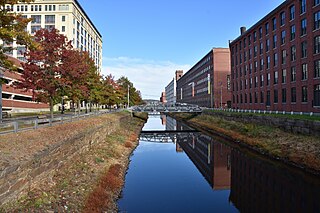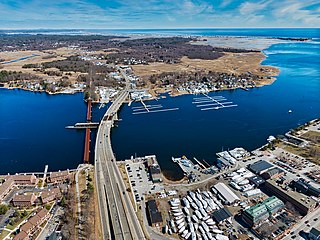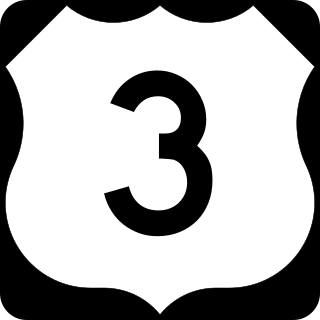
Essex County is a county in the northeastern part of the U.S. state of Massachusetts. At the 2020 census, the total population was 809,829, making it the third-most populous county in the state, and the seventy-eighth-most populous in the country. It is part of the Greater Boston area. The largest city in Essex County is Lynn. The county was named after the English county of Essex. It has two traditional county seats: Salem and Lawrence. Prior to the dissolution of the county government in 1999, Salem had jurisdiction over the Southern Essex District, and Lawrence had jurisdiction over the Northern Essex District, but currently these cities do not function as seats of government. However, the county and the districts remain as administrative regions recognized by various governmental agencies, which gathered vital statistics or disposed of judicial case loads under these geographic subdivisions, and are required to keep the records based on them. The county has been designated the Essex National Heritage Area by the National Park Service.

Lawrence is a city located in Essex County, Massachusetts, United States, on the Merrimack River. At the 2020 census, the city had a population of 89,143. Surrounding communities include Methuen to the north, Andover to the southwest, and North Andover to the east. Lawrence and Salem were the county seats of Essex County, until the state abolished county government in 1999. Lawrence is part of the Merrimack Valley.

Merrimac is a small town in Essex County, Massachusetts, United States, located on the southeastern border of New Hampshire, approximately 34 miles (55 km) northeast of Boston and 10 miles (16 km) west of the Atlantic Ocean. It was incorporated on April 11, 1876. It is situated along the north bank of the Merrimack River in the Merrimack Valley. The population was 6,723 at the 2020 census. Historically a mill town, it has long since become a largely residential community. It is part of the Greater Boston metropolitan area.

Nashua is a city in southern New Hampshire, United States. As of the 2020 census, it had a population of 91,322, the second-largest in northern New England after nearby Manchester. It is one of two county seats of New Hampshire's most populous county, Hillsborough; the other being Manchester.

The Merrimack River is a 117-mile-long (188 km) river in the northeastern United States. It rises at the confluence of the Pemigewasset and Winnipesaukee rivers in Franklin, New Hampshire, flows southward into Massachusetts, and then flows northeast until it empties into the Gulf of Maine at Newburyport. From Pawtucket Falls in Lowell, Massachusetts, onward, the Massachusetts–New Hampshire border is roughly calculated as the line three miles north of the river.

U.S. Route 3 (US 3) is a United States Numbered Highway running 277.90 miles (447.24 km) from Cambridge, Massachusetts, through New Hampshire, to the Canada–United States border near Third Connecticut Lake, where it connects to Quebec Route 257.

The North Shore is a region in the U.S. state of Massachusetts, loosely defined as the sea coast between Boston and New Hampshire. Its counterpart is the South Shore region extending south and east of Boston.

The Boston and Lowell Railroad was a railroad that operated in Massachusetts in the United States. It was one of the first railroads in North America and the first major one in the state. The line later operated as part of the Boston and Maine Railroad's Southern Division.

The Lowell Line is a commuter rail service of the MBTA Commuter Rail system, running north–south between Boston and Lowell, Massachusetts. It is 25.4 miles (40.9 km) long, with nine stations including the terminals at North Station and Lowell station. All stations are accessible except for West Medford and Mishawum.
This is a list of television and radio stations along with a list of media outlets in and around Boston, Massachusetts, including the Greater Boston area. As the television media market titled as "Boston-(Manchester)" it stretches as far north as Manchester, New Hampshire, and ranks as the ninth-largest media market, and one of top-ten-largest radio media market in the United States according to Nielsen Media Research.

Mammoth Road is a north–south road in Massachusetts and New Hampshire. The road runs from its origin in Lowell, Massachusetts to its northern end in Hooksett, New Hampshire, a suburb of Manchester. The total length of the road is 29.3 miles (47.2 km). It was named "Mammoth" in the hope that the convenience of its directness and elimination of smaller connecting roads between thoroughfares would result in sufficient use and prestige as to "kill all the other roads".

Massachusetts's 6th congressional district is located in northeastern Massachusetts. It contains almost all of Essex County, including the North Shore and Cape Ann and excluding the Merrimack Valley, as well as some towns in Middlesex County.
The New England League was a mid-level league in American minor league baseball that played intermittently in five of the six New England states between 1886 and 1949. After 1901, it existed in the shadow of two Major League Baseball clubs in Boston and alongside stronger, higher-classification leagues.

Maudslay State Park is a Massachusetts state park located in Newburyport. The park is managed by the Department of Conservation and Recreation. It is available for weddings and other programs.

Merrimack Valley Transit, formerly known as Merrimack Valley Regional Transit Authority is a public, non-profit organization in Massachusetts, United States, charged with providing public transportation to an area consisting of the cities and towns of Amesbury, Andover, Boxford, Georgetown, Groveland, Haverhill, Lawrence, Merrimac, Methuen, Newbury, Newburyport, North Andover, Rowley, Salisbury and West Newbury, as well as a seasonal service to the popular nearby summer destination of Hampton Beach, New Hampshire.
The Spirit of Adventure Council is a regional council of the Boy Scouts of America. It serves the greater Boston, Massachusetts, area.
The Merrimack Valley Library Consortium (MVLC) is an American library consortium created by Nancy Jacobson and Evelyn Kuo in 1982. MVLC manages the resource sharing of 36 automated and partially automated libraries in Merrimack Valley region of northeastern Massachusetts, ensuring unified access to all of their catalogs, which represent almost three million items and more than six hundred thousand titles.

John Ashton (1861-1953) was an English-born American architect from Lawrence, Massachusetts.

The Boston & Northern Street Railway Company (B&N) was a horse-drawn and electric streetcar railroad operated on the streets of Boston, Massachusetts, and communities to the north. Founded in 1859 as the Lynn and Boston Railroad (L&B), via lease and merger it became a primary mass transit provider for northeastern Massachusetts and New Hampshire. Its immediate successor was the Bay State Street Railway (Bay State), and its modern successor is the state-run Massachusetts Bay Transportation Authority (MBTA).




















